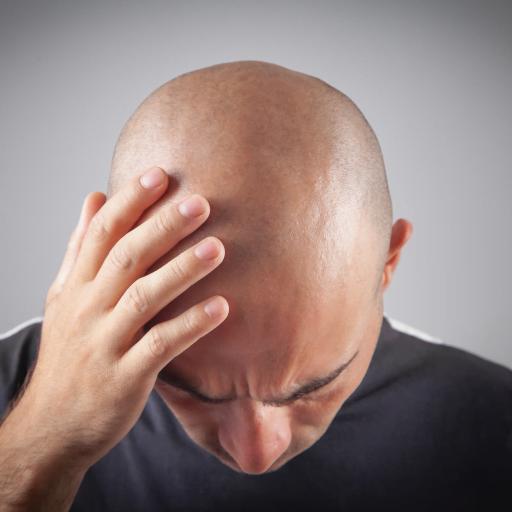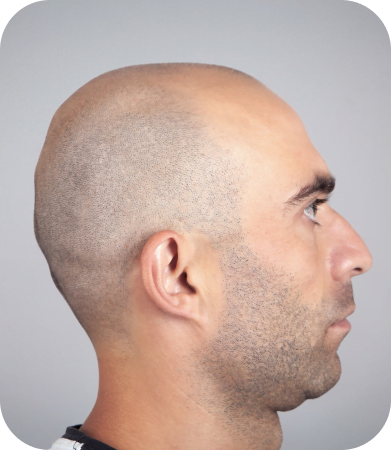Male Pattern Baldness
Male pattern baldness is one of the most common and recognizable forms of hair loss. It typically starts at your temples or crown, or it may cause your hairline to simply recede backwards. In most cases of male pattern baldness, the hair gets thinner over time until there is no longer hair on the top of the head or around the front of the hairline. Male pattern baldness commonly affects men as they age, and genetic factors can come into play.
Male Pattern Baldness: It’s More Common Than You Think
According to some estimates, as many as half of all American males will experience male pattern baldness before the age of 50. While it’s often associated with aging, male pattern baldness can begin when you are still young. Some men see thinning hair as early as their 20s. About 70% of men will experience male pattern hair loss in their lifetime.
Genetic Factors
For many people, male pattern baldness runs in the family. You may be able to predict your likelihood of hair loss by looking at older relatives and seeing what their hair looks like.
Hormonal Factors
But genetics isn’t the only reason for male pattern baldness. Hormonal factors can also come into play. Testosterone and other androgenic hormones change over time and contribute to changes in hair growth, including male pattern baldness. Androgen hormones are also significant to this type of hair loss.
Race and Ethnicity
Your ancestry may be a factor in hair loss as well, with caucasian men experiencing male pattern baldness sooner and at a greater rate than other races.
Hair Growth
To understand male pattern baldness and treatments for reversing male pattern baldness, you should first consider the growth cycle of your hair. Every hair grows out of a tiny opening called a hair follicle. Typically, each hair will grow about an inch each month until it reaches its peak length. It then goes into resting mode and waits for several months before growing again. This process repeats itself many times throughout your life.
When the growth cycle is disrupted or diminished, hair follicles can start to shrink. This shrinkage causes the hair coming out of the follicle to be thinner and shorter. Eventually, the growth cycle for each strand will stop completely. When this happens, the hairs will fall out and not grow back. When this happens with many follicles, it results in visible hair loss.
The Effect on Mental Health
Male pattern baldness may be common, but that does not mean it is always easy to handle. While few health risks are associated with male pattern baldness, the impact on your mental health can be significant. Male pattern baldness can lead to depression or anxiety. It can cause diminished vitality and a lowered sense of worth.
Male Pattern Baldness: Solutions
Solutions exist for people who suffer from male pattern baldness; now has never been a better time for getting help. There is not a male pattern baldness cure, but there are treatment options that can make a huge difference. Ultimately, you do not have to let male pattern baldness be a certainty in your life. By learning more about the condition, you can start to take control of your appearance once more.
Although male pattern baldness is prevalent, it is certainly not the only reason for hair loss. You should never assume male pattern baldness causes hair loss without also considering other causes. Some other conditions and medications can affect your hair. It is best to have your hair loss assessed by a professional before moving forward with a plan to address the issue.


